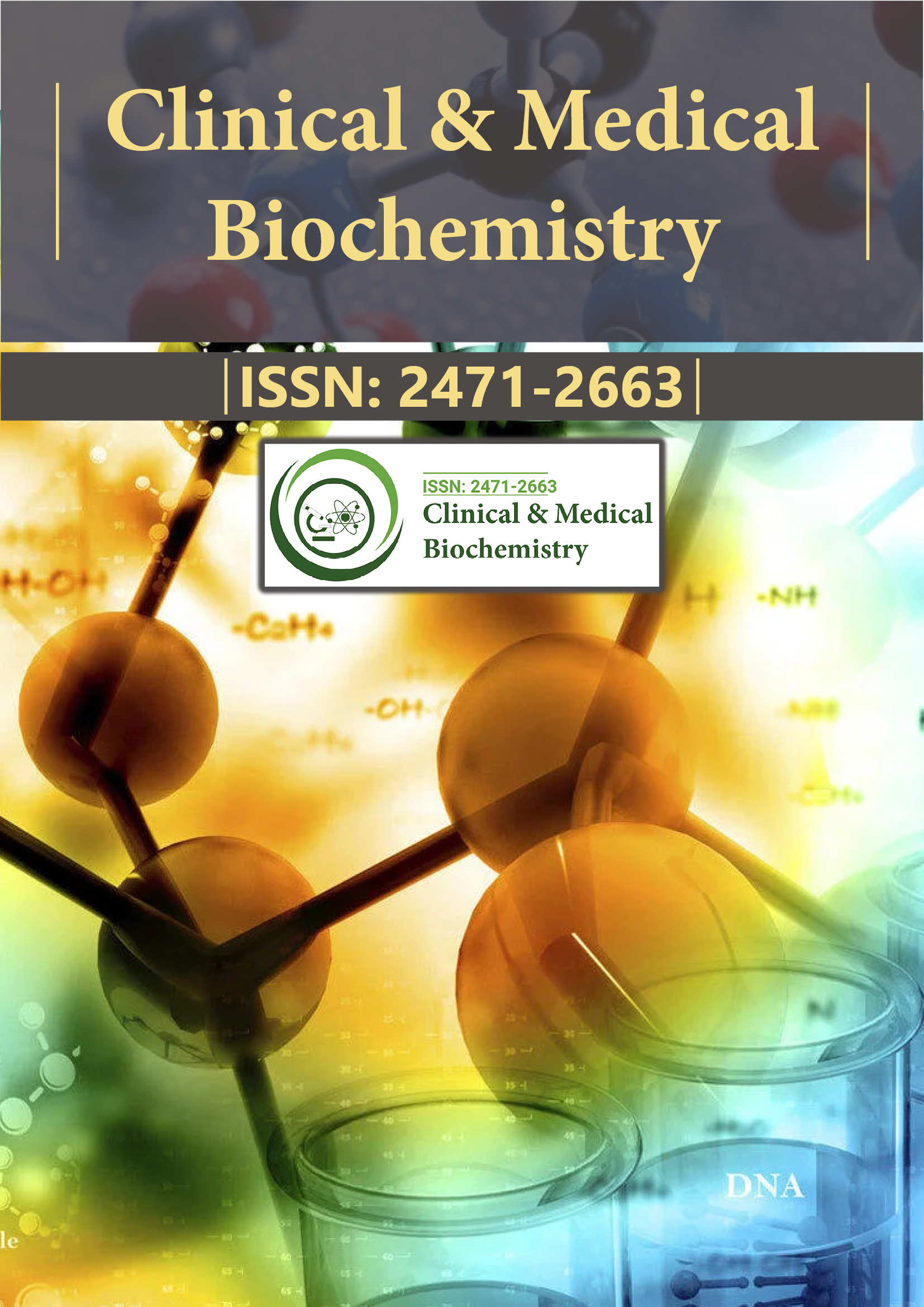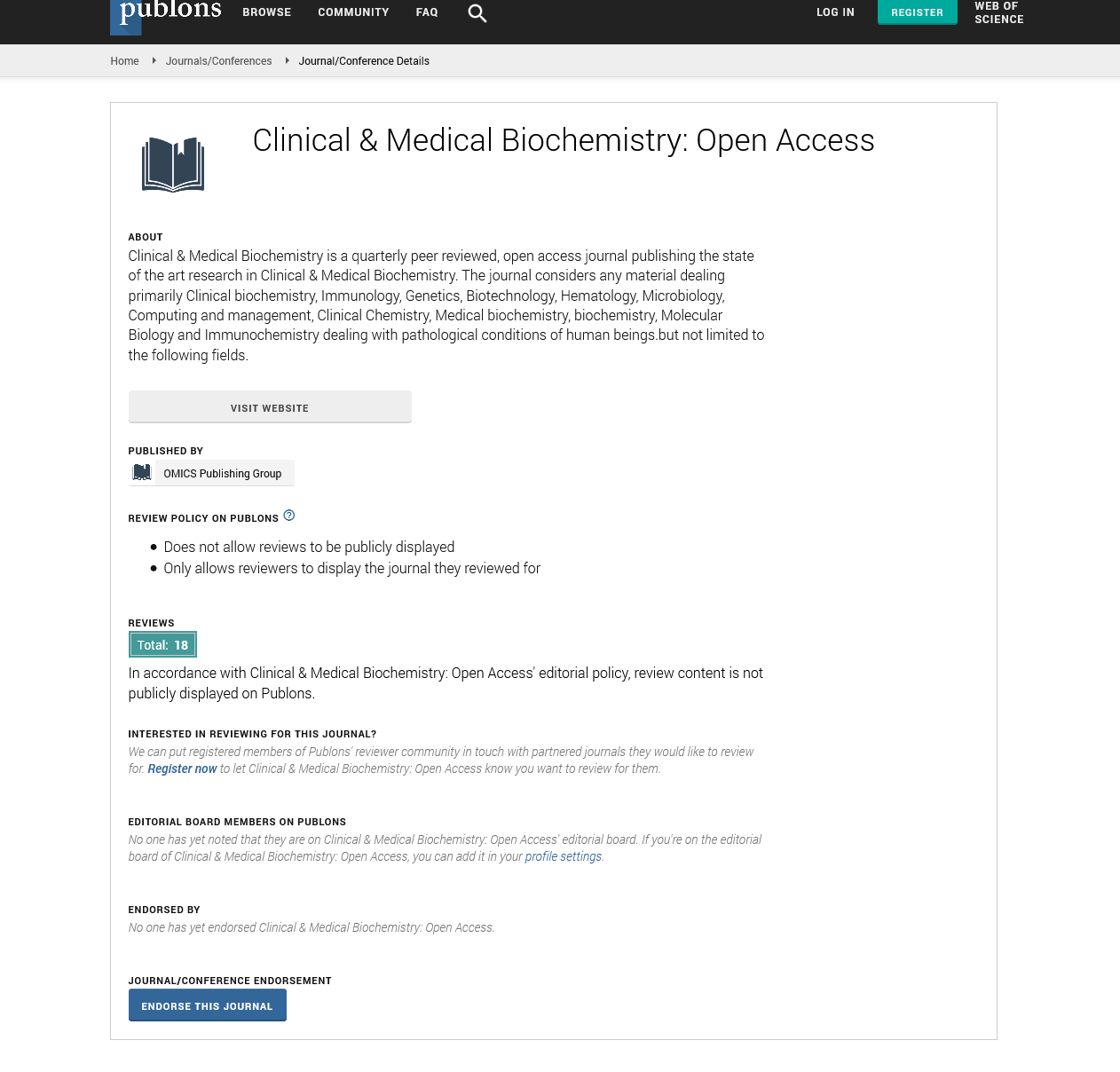Indexed In
- RefSeek
- Directory of Research Journal Indexing (DRJI)
- Hamdard University
- EBSCO A-Z
- OCLC- WorldCat
- Scholarsteer
- Publons
- Euro Pub
- Google Scholar
Useful Links
Share This Page
Journal Flyer

Open Access Journals
- Agri and Aquaculture
- Biochemistry
- Bioinformatics & Systems Biology
- Business & Management
- Chemistry
- Clinical Sciences
- Engineering
- Food & Nutrition
- General Science
- Genetics & Molecular Biology
- Immunology & Microbiology
- Medical Sciences
- Neuroscience & Psychology
- Nursing & Health Care
- Pharmaceutical Sciences
Opinion Article - (2023) Volume 9, Issue 5
Junctional Adhesion Molecule-Like (JAML) Immunotherapy: A New Frontier in Cancer Treatment
Lorranne Marins Goncalves*Received: 01-Sep-2023, Manuscript No. CMBO-23-23076; Editor assigned: 04-Sep-2023, Pre QC No. CMBO-23-23076 (PQ); Reviewed: 18-Sep-2023, QC No. CMBO-23-23076; Revised: 25-Sep-2023, Manuscript No. CMBO-23-23076 (R); Published: 02-Oct-2023, DOI: 10.35841/2471-2663.23.9.185
Description
Cancer remains one of the most significant threats to global public health, with millions of lives affected by its severe impact. Conventional cancer treatments, such as chemotherapy and radiation therapy, often exhibit limited efficacy and significant side effects. However, recent advancements in immunotherapy have transformed the view of cancer treatment by utilizing the body's immune system to recognize and eradicate cancer cells. Among the various components of the immune system, CD8+ T cells have emerged as potent effectors in antitumor immune responses due to their ability to specifically target and eliminate malignant cells. CD8+ T cells, also known as Cytotoxic T Lymphocytes (CTLs), are involved in immune surveillance against cancer. Their primary function is to recognize and eliminate cells that are infected with pathogens or have undergone malignant transformation. This recognition is mediated through the interaction of the T Cell Receptor (TCR) with specific antigens presented by Major Histocompatibility Complexes (MHC) on target cells.
The antitumor response mediated by CD8+ T cells involves a complex series of events, including the activation of natural CD8+ T cells, clonal expansion, and differentiation into effector CTLs. Once activated, effector CD8+ T cells perform their cytotoxic functions, directly attacking and eliminating cancer cells through mechanisms such as perforin and granzyme release. JAML is a transmembrane protein belonging to the Junctional Adhesion Molecule (JAM) family. This family of proteins is known for their roles in cell adhesion, immune responses, and inflammation. JAML, in particular, is expressed on various immune cells, including T cells, and has recently gained prominence for its role in modulating immune responses. Depending on the cellular context and its interactions with ligands, JAML can either promote or inhibit T cell activation, making it an adaptable prospect for immunotherapy. One of the most potent aspects of JAML immunotherapy is its unique ability to selectively target recently activated tumor-infiltrating CD8+ T cells. In addition to its role in T cell activation, JAML has been involved in the regulation of T cell migration. By modulating adhesion and chemotaxis, JAML may enhance the infiltration of activated CD8+ T cells into the tumor microenvironment, where they can exert their antitumor effects more effectively.
Combinations of immunotherapies have shown potential in enhancing antitumor responses. JAML immunotherapy may synergize with immune checkpoint inhibitors, such as anti-PD-1 or anti-CTLA-4 antibodies, to further augment CD8+ T cell responses within the tumor microenvironment. Early results have shown potential, stimulating further investigation into its safety, efficacy, and potential as a cancer treatment. JAML's unique ability to target recently activated CD8+ T cells offers the possibility of customized treatment strategies. Modifying immunotherapy to individual patients' immune profiles and tumor characteristics may enhance treatment outcomes and minimize adverse effects. As with any emerging therapy, JAML immunotherapy faces challenges, including the need for a deeper understanding of its mechanisms and potential side effects.
Conclusion
C-reactive protein has emerged as a potential biomarker for assessing the risk of incident heart failure in patients with established cardiovascular disease. The link between CRP levels and heart failure risk underscores the importance of inflammation in the pathophysiology of heart failure. As our understanding of the correlation between CRP and heart failure continues to evolve, it may provide valuable insights into the prevention and management of this disable condition.
Citation: Goncalves LM (2023) Junctional Adhesion Molecule-Like (JAML) Immunotherapy: A New Frontier in Cancer Treatment. Clin Med Bio Chem. 9:185.
Copyright: © 2023 Goncalves LM. This is an open-access article distributed under the terms of the Creative Commons Attribution License, which permits unrestricted use, distribution, and reproduction in any medium, provided the original author and source are credited.

